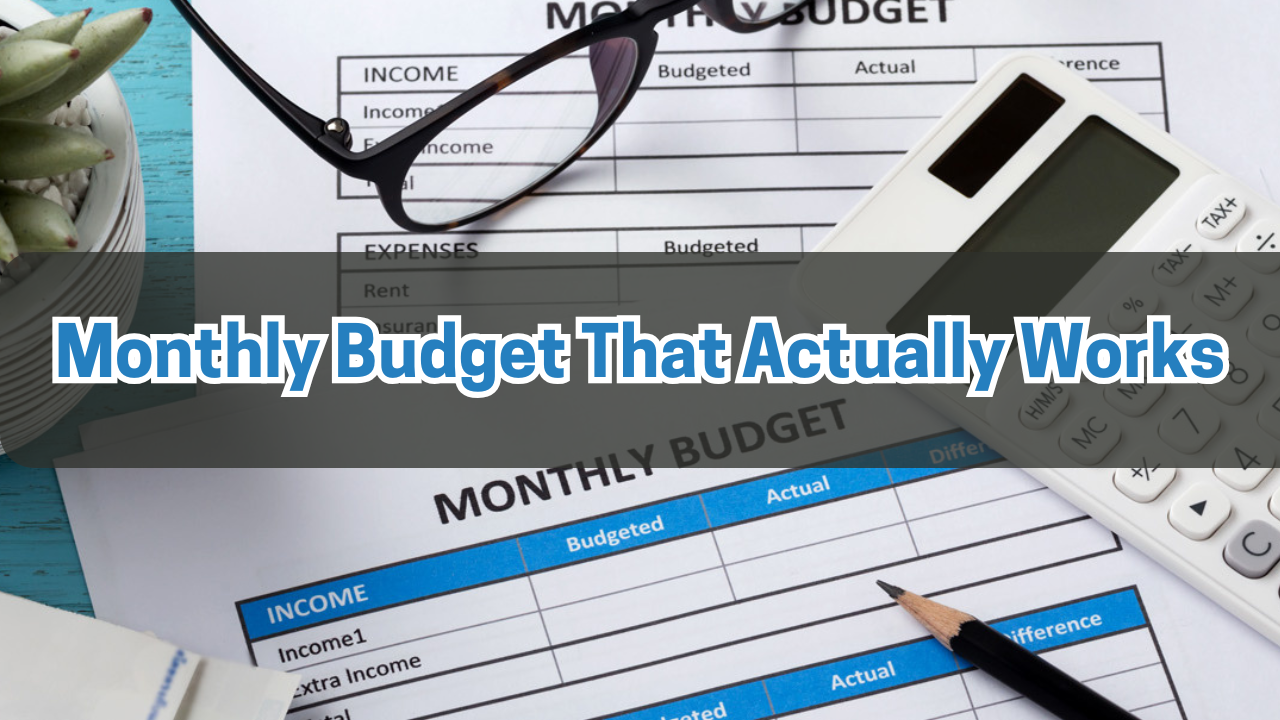
How to Create a Monthly Budget That Works
Setting up a monthly budget is a way to take charge of your financial future not just keep tabs on your spending. You can prioritize spending save for goals and stay out of debt by using a budget that gives you a clear picture of where your money is going. Because they perceive budgeting as restrictive many people find it difficult. On the other hand, a well-designed budget gives you the ability to make wise choices and match your spending to your financial goals and values.
Assessing Your Financial Situation:
Evaluating your existing financial status is the first step in making a monthly budget. This entails carefully examining your earnings and outlays. Start by figuring out your entire monthly income which should include both your primary and any additional sources of income. Since it is the basis of your budgeting process knowing your cash flow is essential.
Next, track your expenses for a month to get a clear picture of your spending habits. Categorize your expenditures into essential needs such as rent, groceries, and utilities, and discretionary expenses like dining out or entertainment. Many people are surprised to discover how much they spend on non-essentials. This step helps identify areas where you can cut back.
Setting Clear Financial Goals:
Well-defined financial objectives serve as the foundation for a successful budget. These objectives can range from short-term goals like vacation savings to long-term strategies like debt repayment or emergency fund building. Setting these objectives provides direction and purpose to your budget.
When setting your goals, ensure they are specific, measurable, and realistic. For example, instead of vaguely aiming to save more, decide to save $500 in three months. Goals like these help keep you motivated and provide benchmarks for evaluating your progress.
Designing Your Monthly Budget:
Now that you have a clear picture of your earnings outlays and financial objectives it’s time to create your budget. Start by setting aside money for your necessities. These include minimum debt payments groceries utilities rent or a mortgage and transportation. Prior to discussing discretionary spending make sure that these essentials are met.
Next set aside a certain amount of your income for savings. Generally speaking you should set aside at least 20% of your income for savings though this will depend on your particular circumstances. Your future will be your top priority if you treat saving as an unavoidable expense regardless of whether you are saving for a specific goal retirement or emergency fund.
Finally, allocate the remaining income to discretionary expenses. While it’s important to enjoy your hard-earned money, this portion of the budget is where you can make adjustments if needed to meet your financial goals.
Tracking and Adjusting Your Budget:
Establishing a budget is just the first step maintaining it calls for regular monitoring and monitoring. To keep an eye on your spending use resources like spreadsheets budgeting apps or even a plain notebook. The secret is to make sure you’re staying on course by reviewing your budget regularly.
Because of the unpredictability of life, your financial situation may alter. Your budget should be flexible enough to adjust to unforeseen circumstances such as an unexpected medical bill or a sudden increase in income. Never be afraid to review and modify your budget as necessary to account for alterations while maintaining your financial objectives as your top priority.
Overcoming Common Budgeting Challenges:
Many people find budgeting difficult because they don’t think it is important enough or because they think it takes too much time. Prioritize process simplification in order to overcome these obstacles. Reduce the strain of manual tracking by automating savings contributions and bill payments.
Another common challenge is overspending on discretionary expenses. Combat this by creating spending limits for categories like dining out or entertainment and sticking to them. If impulse purchases are a problem, consider adopting a 24-hour rule: wait a day before buying anything non-essential.
Building Long-Term Budgeting Habits:
Maintaining your budget over time requires consistency. Budgeting should be approached as a routine rather than a one-time event. Every week set aside time to examine your expenses monitor your progress toward your objectives and make any required corrections.
Celebrate small wins along the way to stay motivated. Whether paying off a credit card or reaching a savings milestone, recognizing your achievements reinforces positive financial behavior.
Conclusion:
Creating a monthly budget that works isn’t about restricting yourself; it’s about aligning your spending with your values and goals. By assessing your financial situation, setting clear objectives, and tracking your progress, you can take control of your finances and build a more secure future. Remember, the key to a successful budget is flexibility and consistency. Start today, and you’ll be amazed at the difference a well-planned budget can make in your life.